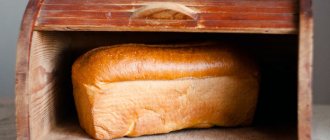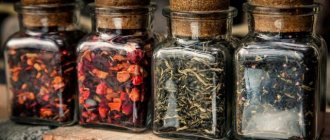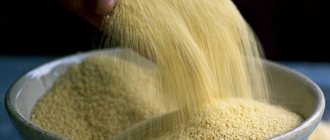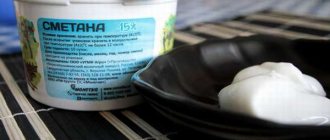Coffee is a drink with a rich history; an entire consumption culture has been built around it. To be able to enjoy the bright taste and special aroma, the product must be fresh. How long does ground coffee last? To control this issue, manufacturers write terms on the container. However, this is not enough: in order to preserve the quality of the drink for as long as possible, it must be literally protected.
First, let's deal with the deadlines
- Shelf life is the dates that manufacturers usually indicate on the container. During this period the product can be stored, it will not lose its tart taste or aroma;
- Expiration date is the date until which the product can be consumed without fear.
According to GOST
State regulation of product quality is carried out using documents:
- GOST R 52088-2003 “Natural roasted coffee. General technical conditions" lists and describes varieties, requirements for appearance, organoleptic properties, raw materials, labeling.
- GOST 32775-2014 “Roasted coffee. General technical conditions" contains classification, requirements for appearance, taste, smell.
- GOST ISO 24114-2013 “Instant coffee. Criteria for authenticity."
- GOST ISO 4149-2016 “Green coffee. Odor control, visual, determination of impurities and defects.”
How long do unroasted beans last?
Grains without heat treatment can retain their valuable qualities for 1-3 years, and the use of sealed packaging can extend storage up to 5 years.
The appearance of the grains also speaks volumes. Freshly picked fruits are distinguished by a rich green velvety color and a pronounced longitudinal stripe.
When broken, their edges remain smooth, and they are characterized by the smell of fresh grass.
The pallor of the grains indicates their age.
And if in one package there are grains of different sizes and shades, then there is a mixing of harvests from different years.
This negatively affects the duration of preservation of the consumer qualities of the product.
Read in this article what kind of packaging and under what conditions it is better to store churchkhela.
It is also worth refusing to purchase grains that have dried edges, are hard, like stone, or, on the contrary, easily crumble, and have a musty smell.
Marking
It is applied to the label and contains:
Dear readers! To solve your problem right now, get a free consultation
— contact the lawyer on duty in the online chat on the right or call: +7 (499) 938 6124 — Moscow and region.
+7 (812) 425 6761 — St. Petersburg and region. 8 (800) 350 8362 - Other regions of the Russian Federation You will not need to waste your time and nerves
- an experienced lawyer will solve all your problems!
- name: natural roasted, instant, coffee drink, insoluble;
- name, address of the manufacturer;
- trademark;
- the standard according to which it is produced;
- variety;
- weight;
- best before date.
The expiration date must fall within the average range for a particular package. Too large indicates additional processing of the product.
Does coffee have an expiration date?
Like other food products, coffee has a certain shelf life when its taste and aroma qualities are most pronounced. The timing depends on several factors:
- type (grains, ground, instant);
- packaging;
- storage conditions.
The most popular types are grain and ground. For long-term storage, it is recommended to purchase grains: they retain the aroma longer. Roasted ones can be kept for up to 2.5 years without compromising their organoleptic properties. After grinding, it is better to consume it within a couple of weeks, since damage to the integrity of the grains leads to volatilization of essential oils. To delay this process, the container must meet the tightness requirements.
Selection of capacity
The choice of jar depends on what type of coffee needs to be preserved. However, there is a container suitable for storing all types of coffee. The most popular are opaque jars with a tight-fitting lid. They protect coffee from odors, prevent moisture penetration and protect from light.
You can use tin cans to store coffee beans. The lids do not fit very tightly, so such containers are more suitable for rooms with low humidity.
In addition to common containers, special vacuum bags have appeared on sale. They are equipped with a special valve through which air is pumped out. In an airless space, not only are there no unnecessary odors and moisture, but also the processes of oxidation and bacterial growth slow down. Coffee in such bags tolerates freezing well.
Timing and types
| Kinds | Deadlines (months) | |||||
| Jar | Plastic bag | Vacuum packaging | Capsules | Freezer/ Refrigerator | Closet | |
| Black grains | 6 | 0,5 | 12 | — | — | 0,5 |
| Greens | 6 | 0,5 | 12-24 | — | — | 0,5 |
| Roasted | 6 | 0,5 | 12 | 9-24 | — | 0,5 |
| Unroasted | 6 | 0,5 | 12-24 | — | — | 0,5 |
| Ground | 6-18 | 6 | 12-36 | 9-24 | — | 6 |
| 3 in 1 | 24 | 24 | 24 | — | — | 24 |
| Sublimated | 24-70 | 24-70 | 24-70 | — | — | 24-70 |
Proper storage
The grain can be roasted or unroasted. Green grains should not be stored for more than 1-2 years. A pale color and unusual smell will indicate staleness. Roasting reduces the time to several months; the tightness of the packaging is of great importance.
Ground is not worth buying for future use. After opening the package, essential oils begin to evaporate and their original qualities are quickly lost. The maximum period of use is 2 weeks. Drinking such coffee after a month no longer makes sense: you won’t be able to get the expected pleasure.
3 in 1 coffee can only be called conditionally. The bags contain a large proportion of sweeteners and flavorings, which completely kills the true taste of the drink. The soluble concentrate in the 3 in 1 composition is usually of questionable quality.
Sublimated is produced using special technology. Coffee beans are roasted, ground into powder, and boiled for several hours. Then they are frozen, the liquid is vacuum drawn out, crushed and packaged. The final stage is the enrichment of the product with essential oils collected during the cooking process.
The method is called “dry freezing”. It allows you to preserve the valuable qualities of the product for a long time. The process is quite long and expensive, so the price is slightly higher than granular or soluble. But the result is definitely worthy of attention.
IMPORTANT! Sublimation is a technology that permanently seals the true taste and aroma of coffee.
The rules for storing different types are similar:
- The packaging must be absolutely sealed. The package is closed with special grooves, the jar is closed with a lid. Opened quickly expires.
- It is necessary to protect from foreign odors, as the product absorbs them well.
- The storage location should be away from heating devices, light and heat sources. Avoid exposure to direct sunlight.
- Storage in the refrigerator or freezer is not recommended. This is fraught with the formation of condensation and impregnation with foreign odors.
- The temperature should be room temperature, humidity up to 75%.
If the above rules are followed, the product will remain fragrant and tasty for the entire period guaranteed by the manufacturer.
The container where the product is contained is of great importance. The optimal method for long-term storage is vacuum packaging. However, after opening, you must immediately pour it into a glass or ceramic jar with an airtight lid.
A paper bag is not suitable for long-term storage. It allows air to pass through, so the contents will quickly lose flavor.
The plastic bag must have closing slots and should be stored in a cool, dark place.
Popular capsule packaging perfectly protects the contents from the external environment. The positive point is the size for a single serving, the negative point is the need to use a special machine.
Where to store?
Storage of coffee has a different period depending not only on the packaging, but also on the location. The product can be stored in the closet, refrigerator and freezer. Each place has both advantages and disadvantages.
This place is perfect for storing coffee that you grind and brew once a day. The best temperature, absence of water and haze are the necessary conditions for the preservation of the product. You should not place a bag or jar of grains in a cabinet located near the oven or stove, or opposite a window that does not face the sun.
Despite the popular belief that coffee can and even should be stored in the refrigerator, do not try this at home. The temperature in the refrigerator compartment ranges from +2°C to +6°C. It is not low enough and will not provide freshness to the product. In addition, when the package is repeatedly removed from the refrigerator, the grains become covered with condensation, which turns into water and leads to rapid deterioration of even the freshest product.
This is the best place to preserve the freshest coffee for a long time. But you need to immediately pour out the required amount of grains, which you will use for everyday grinding. If you freeze the beans immediately after roasting, they will remain fresh for up to 2 months.
If you choose the right container and storage location, the smell of freshly ground coffee will fill your home even months after purchase.
Shelf life of coffee beans. Storage nuances.
Many people love coffee. For some it is just a daily boost of energy, but for others it is a whole ritual, including choosing types and making coffee drinks using various methods.
But not everyone knows that coffee has an expiration date and storage nuances that can extend the shelf life of coffee beans.
How to determine that the deadline has expired
Expiration markers will vary between types. Raw grains lose their brightness, the green color becomes heterogeneous. They become brittle or crumble. The aroma is completely absent.
Roasted products whose consumption period has expired can be recognized by:
- oily shine;
- lack of aroma or smell of rancid oil;
- dark color.
Ground very quickly loses its inherent notes of taste and aroma, so after two weeks they will be gone - this is an accurate signal to understand that the expiration date has expired.
Similar changes apply to freeze-dried food. In addition to the loss of smell, it can turn into a single conglomerate or, conversely, crumble. The custard will taste bitter and the color will be too dark.
What is the difference between Arabica and Robusta?
Arabica and Robusta coffee are completely different.
- Arabica has a delicate taste and exquisite aroma; soft, invigorating drinks are prepared from it, leaving a creamy, nutty or chocolate aftertaste.
- Robusta in its pure form is not so tasty. The coffee will be very strong and bitter, because it contains three times more caffeine.
Therefore, as a rule, Robusta is mixed with Arabica. Then the drink has a pleasant bitterness, and a high, creamy foam forms. This is the type of coffee that most people like. In addition, Arabica is more expensive than its mixture with Robusta. This is due to the fact that it is less productive. Its grains have a high density - they contain a larger volume of essential oils. Therefore, it takes longer to ripen.
If, when purchasing, you have the opportunity to look into an open pack of coffee or the beans are purchased by weight, then the quality can be determined by their appearance. Arabica beans have round, regular oval shapes and are 5-8 mm long (except for Yemeni beans - they are small). All Arabica beans in a package should be approximately the same size and shape. Otherwise, there is a chance that it is a blend with Robusta. Beans that have been stored correctly are velvety to the touch and have a strong, fresh aroma. They appear to be the same even color. Only in the melange mixture do they differ in color - this is a mixture specially composed of products of different degrees of roasting.
Is it possible to return the taste to expired food?
You can try to partially restore the taste of an expired product. This only applies to grains. If you fry them as intensely as possible with spices: cloves, pepper, anise, then the herbs will give it their aroma, and the high temperature will reveal the remaining flavor properties.
It is impossible to fully restore the taste. It is better to use grain for decorative purposes, and ground - for adding to flowers or as a dye or scrub.
IMPORTANT! Coffee loses its properties irrevocably. All restoration methods can give the grains or grinds the smell of spices, but will not allow you to get the full effect of the drink.











